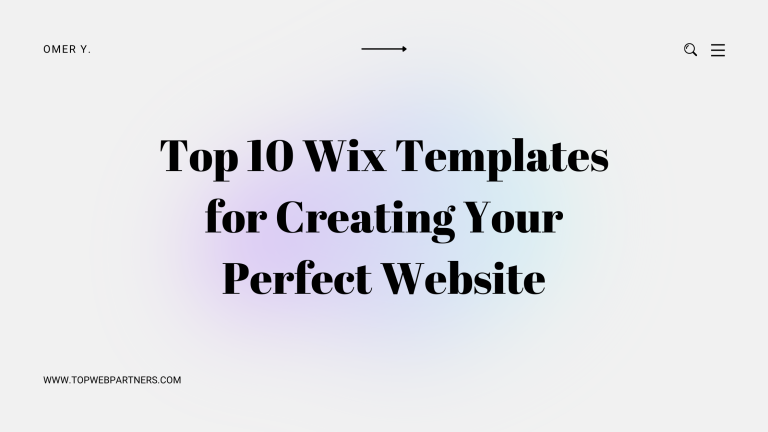How to Speed Optimize Your Wix Website
Introduction
It’s no secret that a fast-loading website is crucial for user experience and search engine rankings. Wix, as a popular website building platform, allows users to create stunning and feature-rich websites. However, sometimes the site’s performance may not be up to par. In this article, we’ll discuss how to speed optimize your Wix website to ensure the best experience for your visitors.
Benefits of a Fast-Loading Wix Website
A fast-loading Wix website offers multiple benefits:
- Improved user experience: Users are more likely to stay on a fast-loading site and navigate through multiple pages, resulting in lower bounce rates and higher engagement.
- Better search engine rankings: Google considers page speed as a ranking factor, so a faster website can lead to improved search visibility.
- Increased conversions: A quicker website can lead to higher conversion rates, as users are less likely to abandon a slow-loading page.
Common Causes of Slow Wix Websites
There are several factors that can contribute to a slow Wix website:
- Heavy or unoptimized images: Large image files can significantly slow down page load times.
- Excessive use of third-party apps and widgets: These can add extra weight to your site, causing slowdowns.
- Complex or inefficient code: Poorly written code can lead to longer load times.
- Inappropriate template choice: Some templates may not be optimized for performance.
Wix Speed Optimization Techniques
Let’s dive into some proven techniques to speed optimize your Wix website:
Choose the Right Template
Start by selecting a template optimized for speed. Wix offers a variety of templates designed for fast loading times. Look for templates that are mobile-optimized and have a clean, minimal design.
Optimize Images
Images play a significant role in website performance. Follow these tips for optimizing images:
- Resize images to the appropriate dimensions for your website.
- Use an image compression tool to reduce file size without sacrificing quality.
- Convert images to modern formats, such as WebP, for better compression.
Utilize Wix Turbo
Wix Turbo is a built-in feature that accelerates your website’s performance. This tool optimizes your site’s code and images, ensuring faster load times. Make sure to enable Wix Turbo to take advantage of its performance-boosting capabilities.
Minimize Third-Party Apps and Widgets
While third-party apps and widgets can add functionality to your site, they can also slow it down. Assess the necessity of each app and widget, and remove any that aren’t essential. Keep only those that provide significant value to your site and its visitors.
Use Lazy Loading
Lazy loading is a technique that delays the loading of off-screen images and content until the user scrolls to their location. This method improves initial page load times and reduces the overall weight of a page. Wix provides built-in lazy loading for images, so make sure this feature is enabled for your site.
Optimize Wix Code
Efficient code is vital for website performance. Here are some tips to optimize your Wix site’s code:
- Minimize the use of custom JavaScript or CSS where possible, and rely on built-in Wix features.
- Remove any unnecessary or unused code from your site.
- Consolidate JavaScript and CSS files to reduce the number of HTTP requests.
Remove Unused Fonts and Styles
Extra fonts and styles can contribute to slow page load times. Review your site’s design and eliminate any fonts or styles that aren’t in use. Stick to a limited set of fonts and styles to maintain a consistent design while optimizing performance.
Testing Your Wix Website Speed
Once you’ve implemented these optimization techniques, it’s essential to test your site’s speed. Use tools like Google PageSpeed Insights, GTmetrix, or WebPageTest to analyze your site’s performance and identify any additional areas for improvement.
Conclusion
Speed optimization is crucial for a successful Wix website. By implementing the techniques discussed in this article, you can significantly improve your site’s performance, resulting in a better user experience, higher search engine rankings, and increased conversions. Keep monitoring your site’s speed and make adjustments as needed to ensure optimal performance.
Frequently Asked Questions
- How can I test my Wix website’s speed?You can use tools like Google PageSpeed Insights, GTmetrix, or WebPageTest to analyze your site’s performance and identify areas for improvement.
- Does Wix have built-in features for speed optimization?Yes, Wix offers features like Wix Turbo and lazy loading to help improve your site’s performance.
- Can using too many apps and widgets slow down my Wix site?Yes, excessive use of third-party apps and widgets can contribute to slower page load times. It’s essential to evaluate each app and widget’s necessity and remove any that aren’t crucial to your site.
- How can I optimize images for better performance on my Wix site?Resize images to appropriate dimensions, use image compression tools to reduce file size, and convert images to modern formats like WebP for better compression.
- What should I consider when choosing a Wix template for my site?Choose a template that is optimized for speed, mobile-optimized, and features a clean, minimal design to ensure better performance.




